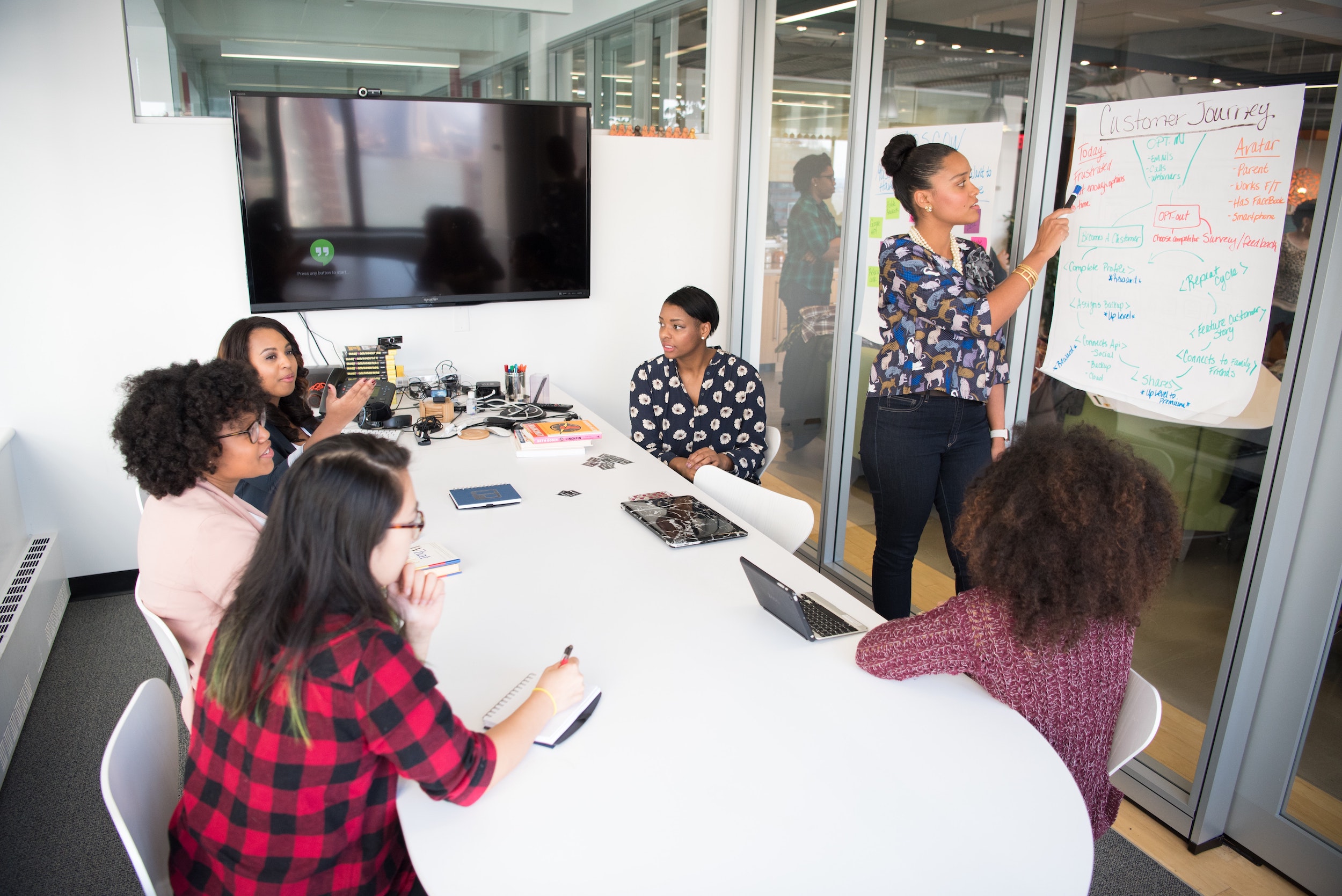Last November, with the support of the Google News Initiative we launched JournalismAI Discovery: an interactive self-guided course designed to help journalists understand what AI technologies can do to improve and support their work.
The course took place over January and February, with 1,000+ participants from every corner of the globe. 53% of course-takers told us that the course changed their perception of AI, making it more accessible and giving them the confidence to start their first AI journalism projects.
In this article, Brandon Roberts – the author of the course – shares some of the things he learned from the participants and what makes him feel optimistic about the future of AI journalism.
[Throughout the article, you can read some quotes from the participants who took the JournalismAI Discovery course. If you want to take the course as well, sign up for our newsletter to be informed when registrations re-open in the next months.]
The inaugural JournalismAI Discovery course concluded two weeks ago. I started researching and writing the six modules back in June 2022, attempting to cover the basics of artificial intelligence and how it relates to the journalism industry. Much has changed in that time!
Writing the six newsletter modules, quizzes, and discussing all things AI and journalism with the course takers has been a whirlwind. Now that it’s over, and some feedback is in, I thought I’d take some time to reflect on everything that went into the course and what I learned along the way.
1️⃣ People know about AI now, and they have opinions
A year or two ago, news people would likely have given a blank stare if AI was brought up. Perhaps this was even true of when I first started writing this course. But now, with AI technologies permeating the mainstream, most journalists know at least a little about it. Many more have opinions and, let’s be honest, they’re often negative.
One of the goals of the Discovery course was to show people that AI is already here, being used for all kinds of tasks and by every newsroom department. Sometimes it’s in exciting, flashy projects. But more commonly, in newsrooms AI sits in the background, doing things like managing paywalls, transcribing interviews, and helping to manage the comments section.

There’s a pretty stark vision of the AI future being painted by some: where AI reports the news, despite not knowing the truth from fiction, and humans are an afterthought.
In reality, AI journalism projects are usually well-planned and deeply considered practically, economically, and especially ethically. By exploring these use cases, we were able to instill a deeper, more nuanced view of AI in course takers. This will help them both use AI in their own work, but also come to well-formed opinions about the ethics and potential risks of such projects.
2️⃣ Never underestimate journalists’ willingness to accept a challenge
People working in the news industry are busy. Each of the six modules of JournalismAI Discovery was approximately 2,500+ words, with dozens of links and topics for discussion in the global classroom on Slack. And yet, as of today, 56% of course takers have already completed the course, even if there was no deadline to stick to.
At the end of each module, we also included a quiz with a few questions to drive home the main points. The quiz was a late addition to the material and didn’t get the level of research and thought that the course material itself did. As a result, the quiz was on the easy side.
Week after week, I was surprised to see how many people took the quiz, as it was buried at the end of the long module emails. I was even more surprised to hear that people wanted even more of a challenge! Some expressed wanting tougher questions that really made them consider the module teachings and apply them to situations and contexts not in the module itself.
I think this highlights the fact that people are starting to see AI literacy as increasingly important. I underestimated their willingness to put in the extra work to understand the core concepts. This brings me to my next main point.
I am very happy to have been part of the first class ever of the JournalismAI Discovery course. The weekly emails are stuffed with easy to understand facts and examples about the use of AI and algorithms in newsrooms. Makes you think and reflect about your daily business and its future. Each chapter is completed by a quiz in which you can prove your understanding. Learning is real fun in such formats.
3️⃣ There’s a huge appetite for journalism-specific educational material on AI
With JournalismAI Discovery, we barely scratched the surface of everything going on in AI and journalism.
The amount of material under the JournalismAI banner alone is massive. There’s the Collab Challenges, the Fellowships, the Festivals, the Report, the database of case studies, and the numerous Polis blog posts. Distilling this into a single resource that is widely understandable by a general journalism audience is a tall order. A lot of material was left out of the course, as you can imagine.
That said, we covered both the basics of artificial intelligence technologies and the many ways it’s employed by newsrooms today. Whenever possible, we attempted to link the concepts to a specific AI journalism use case, followed by links to methodologies and additional information from the original source.
These real-world examples were particularly valuable to the course. They were a frequent source of discussion in Slack and they made the modules, as a whole, practical. But they took a lot of effort to pull together because it usually entailed translating the complex, sometimes highly technical original methodologies into short layperson’s explanations. Examples of AI journalism projects are also difficult to find in the first place!
4️⃣ There’s a void between introductory and academic-level material
Much of the writing about AI journalism out there is highly technical and assumes a level of proficiency in programming and statistics that is rare. My previous breakdowns of machine learning powered investigations suffer from the same problem. Materials that aren’t technical in nature tend to be few and far between, and narrow in scope.
This is one of the most efficient and effective courses I have ever taken part in. Getting complicated yet comprehensive sets of knowledge on your inbox is a really comfortable way to digest new frontiers like AI.
One of the reasons this course was developed was to bridge the gap between these deeply technical and narrow-scope materials. I think we were successful in this – course takers report a 52% increase in their self-assessed AI literacy after taking the course – but there’s still a huge need for gathering AI journalism use cases and explaining them simply. This is especially true for non-English use cases, which leads me to my final point.
5️⃣ The AI journalism community is truly global
Our global classroom on Slack was global in a very literal sense. We had 1,000+ signups from 104 countries across all continents (excluding Antarctica of course).
There were constant queries for examples of AI journalism projects in their language, country and region. Finding them was difficult, sometimes impossible, but the participants’ desire for more was always appreciated.
An interesting and comprehensive introduction to the application of AI in journalism, full of information-rich materials and examples. And also with the possibility to connect with different stakeholders on the same topic across the globe. A must for any journalist, regardless of whether they are going to apply AI in the newsroom or not.
It was an honour to engage with people from such diverse countries of origin, primary languages, areas of expertise, and skill levels. I look forward to seeing how the JournalismAI community develops, and what types of projects are imagined and ultimately implemented. Some of them may go on to be the first in their regions to apply AI to a journalism problem.
There’s still lots of work to be done here. Journalists can help by publishing more methodologies, AI experts by explaining them in simple terms. JournalismAI will continue to share them to a wide audience.
AI may already be here and it may still be uneven, but together we can tip the scales little by little.
If you want to take part in the next edition of JournalismAI Discovery, sign up for our newsletter to be informed when registrations re-open in 2023.
JournalismAI is a global initiative of Polis and it’s supported by the Google News Initiative. Our mission is to empower news organisations to use artificial intelligence responsibly.






